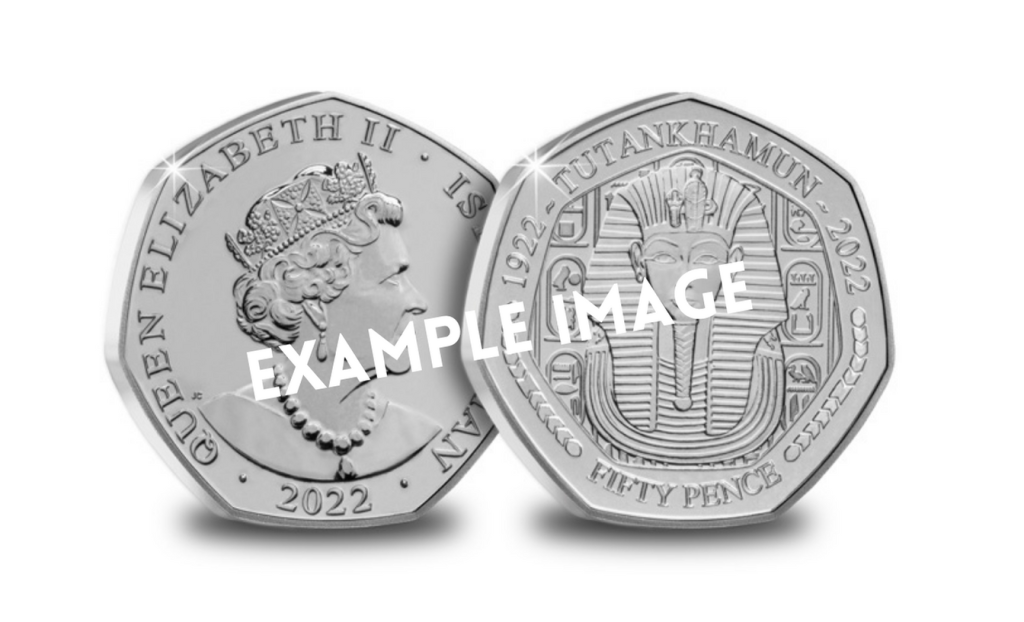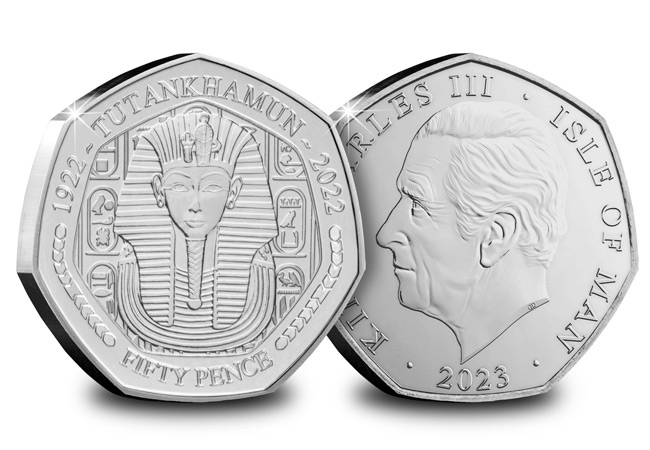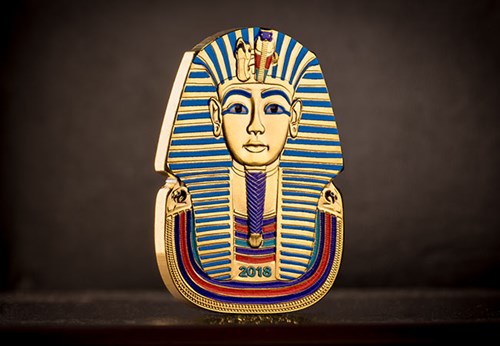Posts Tagged ‘Tutankhamun’
The coins with THREE different dates on them…
Have you heard about the coins with THREE different dates?
- It was approved by Queen Elizabeth II in 2022
- It was re-approved by King Charles III in 2023
- It features ‘1922’ as a date on the obverse
And if these circumstances weren’t unusual enough, the coins releases also missed the 100th anniversary they were commemorating.
These three dates can be seen on the brand new Tutankhamun 50p coins. If you can’t wait to add them to your own collection, click here >>

Otherwise, continue reading to discover how this happened and why the coins are set to become the most collectable coins in years…
How do the coins have three dates?
In 1922, Howard Carter uncovered a step in the Valley of the Kings, Egypt.
That step ended up being the start of a staircase that led to a tomb – the tomb of Tutankhamun.
To mark the anniversary of the incredible discovery, a brand new set of 50p coins were authorised in 2022 by the Isle of Man.
These 50ps then went to Buckingham Palace for approval.
The Queen approved the coins, but that ended up being one of her last official acts before her sad passing on 8 September 2022.

Her death put all new coins on hold.
Mints around the world halted production to observe the mourning period and await palace instructions.
When this came, the Isle of Man was instructed to re-submit an application to the Palace, this time for the approval of His Majesty King Charles III.
The problem? This was late in 2022. Would the Isle of Man get approval from the King before the year of the anniversary passed?
In short, no.
Palace approval came through in January 2023.
The coins features the same reverse, showing 1922 and 2022 commemorating the centenary anniversary.
But the obverse – now featuring the first British Isles King Charles III portrait – carries the year 2023.

So that’s how the coins came to have three dates on it. But what does this mean for it’s collectability?
The power of strange…
Quirks like this are very few and far between… In fact, i’ve never heard of a coin like these.
The closest example came about due to the Coronavirus pandemic in 2020.
When the Olympic Games were postponed from 2020 to 2021 due to the pandemic, it led to a design quirk that created a collecting frenzy for a particular 50p.
Issued in the 2020 Annual Coin Set, the Team GB 50p was issued to mark our athletes participation in the upcoming Tokyo Games.
So, when the games were postponed, so was this coin’s individual issue.
Eventually issued in 2021, this 50p become one of just a handful of coins to feature a dual-date – 2020 on the reverse and 2021 on the obverse.
The coin sold out in a flash.
So considering the popularity of the dual-dated Team GB 50p, you can understand why coins with THREE dates, such as the Tutankhamun 50ps, are a must-have.
Discuss the latest coin releases in the Change Checker Community Group
Share, learn & swap with the Change Checker Community – the only official Change Checker Facebook group.
Discover the currency of Egypt!
For the past few months at Change Checker HQ, we’ve been really enjoying researching different coins from around the world. And the coinage from the sunny climes of Egypt has really caught our attention…
After a bit of digging around, we’ve found out some interesting facts about these fascinating coins… Did you know that Egypt, just like us, uses the ‘pound’ as their currency?
But wait! Before you pack your bags and prepare for a trip abroad without the hassle of exchange rates, you need to be aware that this is not the British pound as we know it, but the Egyptian Pound!
Each pound is made up of 100 piastres (what we would refer to as pennies), and 22 Egyptian pounds convert to 1 British Sterling pound. Egyptian coins are in denominations of 1, 5, 10, 20, 25 and 50 piastres, along with the 1 pound coin of course.
Egypt’s currency design is based largely on its ancient history, with pharaohs, pyramids and past dynasties proving to be popular themes across Egypt’s coinage, including Tutankhamun, Cleopatra and the Pyramids of Giza.

When exploring further into the background of these coins, it’s no wonder Tutankhamun has been chosen as such a poignant design, featuring on the highest denomination, the £1 coin.
As one of the only perfectly preserved Egyptian Royal Tombs, the myth of Tutankhamun is world-famous, making him the best-known King of Egypt. In terms of coinage, Tutankhamun has not only featured in Egyptian minting, but worldwide on various coins (including this recently released coin from Ghana struck in the shape of Tutankhamun’s mask).
Cleopatra also features heavily on Egyptian coins, as the last active ruler of the Ptolemaic Kingdom of Egypt. Her name directly translates to ‘Glory of her father’, and it was rumoured she was romantically involved with Julius Caesar and Mark Anthony. Her legacy is ever standing due to what she represented in a male-dominated society – a strong woman able to hold a country together throughout warfare just as well as her male counterparts. A fitting face for any coin I think!

Egypt 50 Piastres Cleopatra – 2005
It’s clear that the currency of Egypt sits on a proud heritage that maps out its ancient world through the striking designs of its coins. But what do you think about these coins? Let us know in the comments below!



